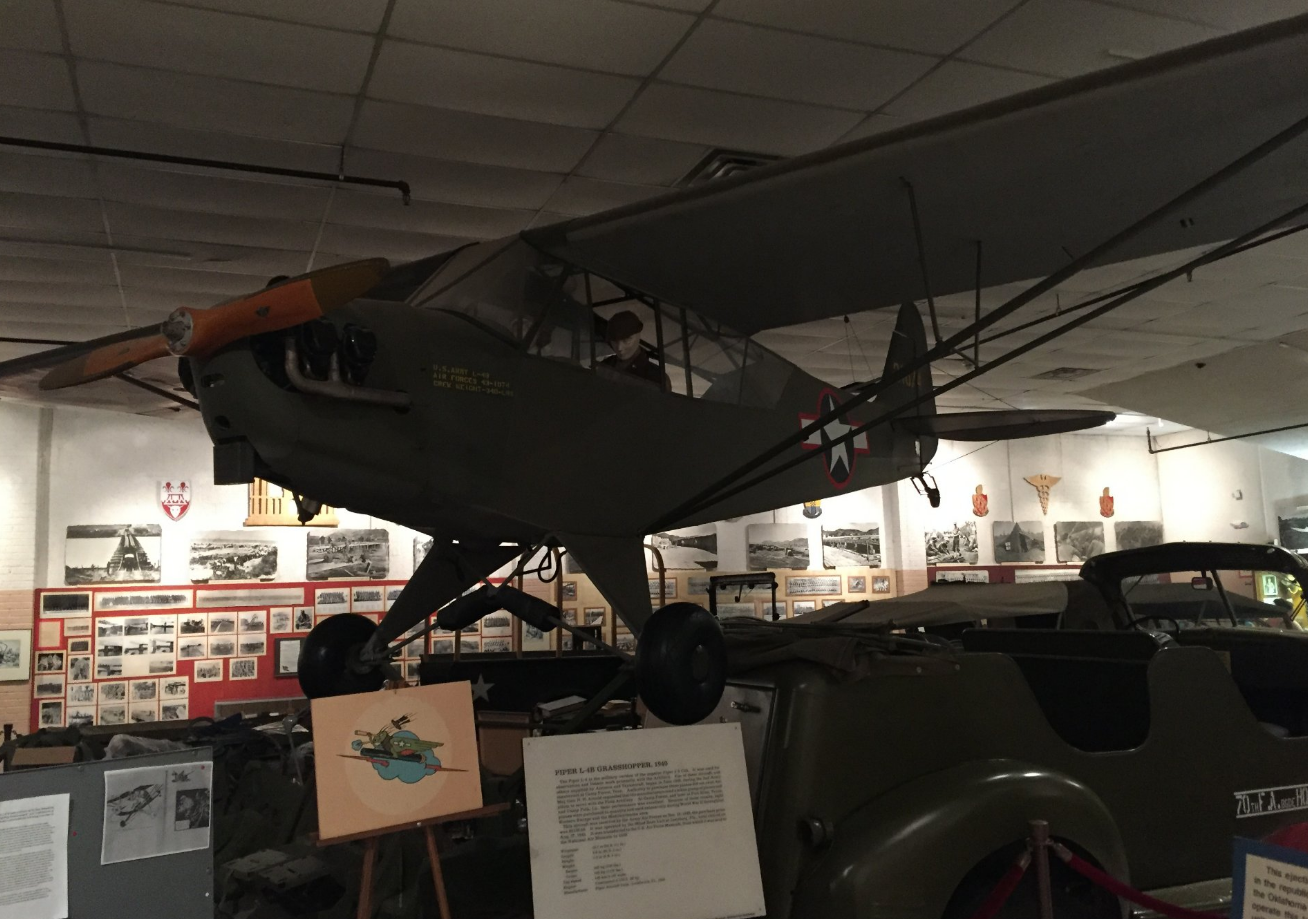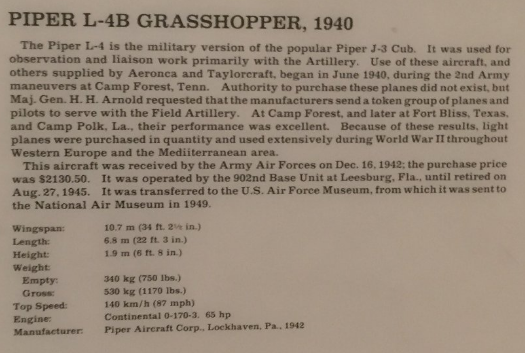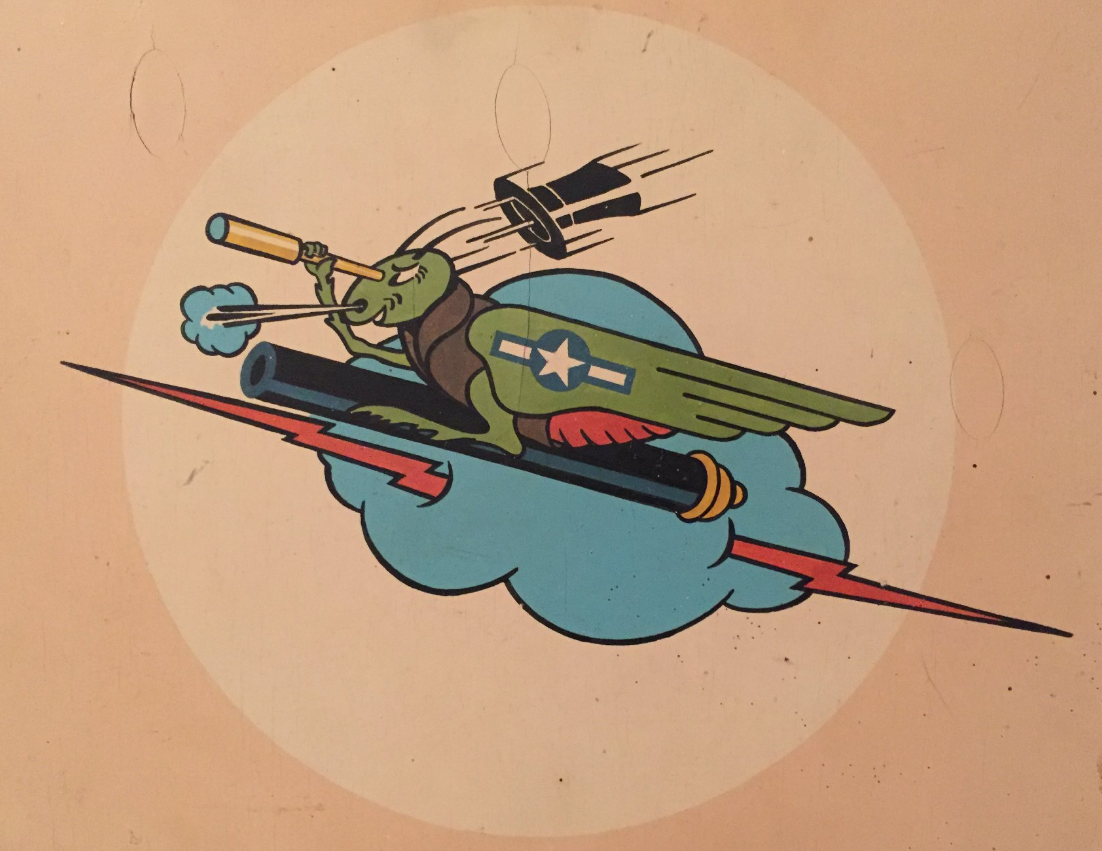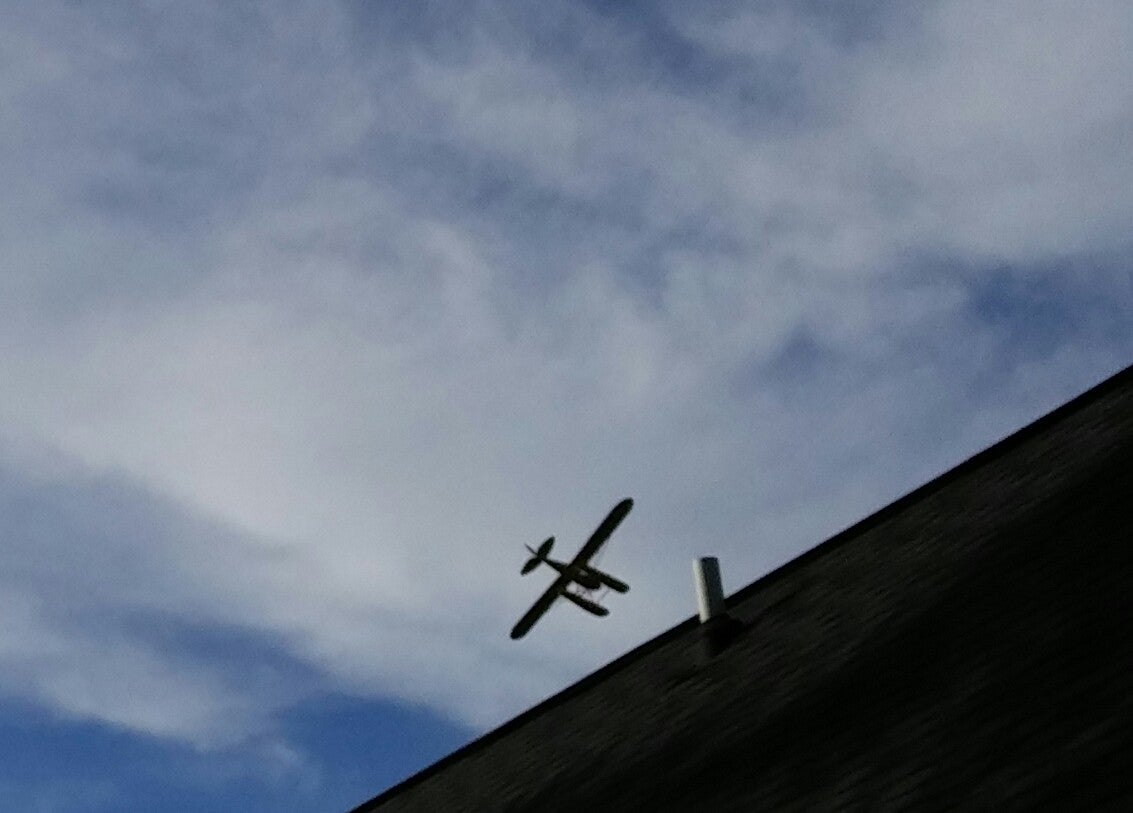 "TheRealBicycleBuck" (therealbicyclebuck)
"TheRealBicycleBuck" (therealbicyclebuck)
06/21/2016 at 08:00 • Filed to: None
 0
0
 5
5
 "TheRealBicycleBuck" (therealbicyclebuck)
"TheRealBicycleBuck" (therealbicyclebuck)
06/21/2016 at 08:00 • Filed to: None |  0 0
|  5 5 |
Another in my ongoing series, “A Visit to the 45th Infantry Division Museum.” Today we have the Piper L-4B “Grasshopper” more commonly known in its yellow form as the Piper J3 “Cub”.

It was said that the L-4, by directing the fire of field artillery, was the most destructive aircraft in service at the time, despite being unarmed and unarmored. At 65 hp, it was the least powerful aircraft in service, but excellent flight characteristics enabled it to use nearly any relatively flat area as a runway, making it one of the most versatile planes during the war. In addition to their forward observation role, they were used for mail and as an air taxi.


 vondon302
> TheRealBicycleBuck
vondon302
> TheRealBicycleBuck
06/21/2016 at 08:32 |
|

Makes a good float plane too. Excuse the potato pic.
 TheRealBicycleBuck
> vondon302
TheRealBicycleBuck
> vondon302
06/21/2016 at 08:36 |
|
I wonder if it requires engine upgrades to use floats. How much drag do floats create anyway? I know low-powered float planes can have issues getting off the water, so when the water is too smooth, they will make a few circles to get some waves going to make it easier to break loose from the water surface. Things to ponder on a Tuesday morning.
 gmporschenut also a fan of hondas
> TheRealBicycleBuck
gmporschenut also a fan of hondas
> TheRealBicycleBuck
06/21/2016 at 21:07 |
|
http://www.5ad.org/units/Duane%20…
‘
On April 11 Francies and his observer, Lieutenant William Martin, took part in Francies’ 142nd mission and one of the most unusual aerial actions of the war. The 71st Battalion was now the closest American force to Berlin-48 miles. Out on an observation mission some 100 miles west of the capital city, Francies noticed a German motorcycle, with the customary sidecar, speeding along a road near some of the 5th Armored tanks. When he and Martin went in to take a closer look at the motorcycle, they also noticed a German Fieseler Fi-156 Storch artillery spotting plane about 700 feet above the trees.
Francies later wrote: “The German Storch, with an inverted 8 Argus engine, also a fabric job and faster and larger than the Miss Me!?, spotted us and we radioed, ‘We are about to give combat.’ But we had the advantage of altitude and dove, blasting away with our Colt .45s, trying to force the German plane into the fire of waiting tanks of the 5th.
Instead, the German began circling.”
Firing out the side doors with their Colts, the American crewmen emptied their guns into the enemy’s windshield, fuel tanks and right wing. Francies had to hold the stick between his knees while reloading. He late recalled, “The two planes were so close I could see the Germans’eyeballs, as big as eggs, as we peppered them.”
After the Storch pilot made a low turn, the plane’s right wing hit the ground, and the plane cartwheeled and came to rest in a pasture. Setting down nearby, the Americans ran to the downed plane.
The German pilot dived behind a huge pile of sugar beets to hide from them, but the observer, who had been hit in the foot, fell to the ground. When Francies removed the observer’s boot, a .45 slug fell out.
Then Martm fired warning shots that brought the pilot to his feet, hands raised. Francies confiscated the pilot’s wings and Luftwaffe shoulder insignia, as well as a Nazi battle flag.
“I never found out their names,” Francies later recalled. “They could have been important, for all I know. We turned them over to our tankers about 15 minutes later after the injured man thanked me many times for bandaging his foot. I think they thought we would shoot them.”
 TheRealBicycleBuck
> gmporschenut also a fan of hondas
TheRealBicycleBuck
> gmporschenut also a fan of hondas
06/21/2016 at 21:48 |
|
Great story! It’s amazing how hard it is to down a fabric plane.
 RedlineZ bought an SV (And is getting rid of the z)
> TheRealBicycleBuck
RedlineZ bought an SV (And is getting rid of the z)
> TheRealBicycleBuck
06/22/2016 at 00:57 |
|
i know a lot of guys who use floats or do banner towing end up using IO-320s normally between 150-160 hp as apposed to the stock 65hp engines with climb props or seaplane props.